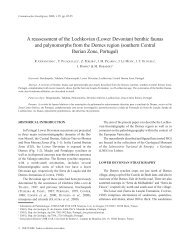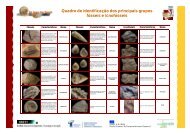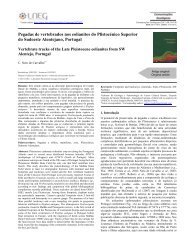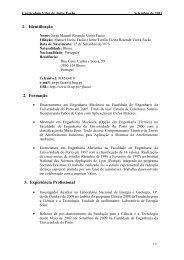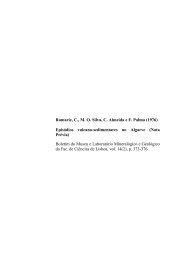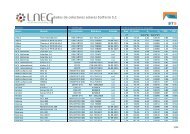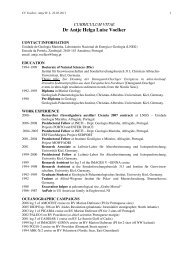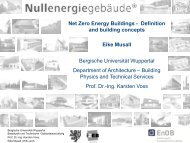Os Edifícios Bioclimáticos a Integração das Energias ... - LNEG
Os Edifícios Bioclimáticos a Integração das Energias ... - LNEG
Os Edifícios Bioclimáticos a Integração das Energias ... - LNEG
Create successful ePaper yourself
Turn your PDF publications into a flip-book with our unique Google optimized e-Paper software.
Filippín, C., Flores Larsen, S., Beascochea, A. (2007) Comportamiento energético de<br />
edificios bioclimaticos de uso intermitente y de alta carga interna en la Pampa. Avances<br />
en Energías Renovables y Medio Ambiente. Vol. 20, pp 17-29.<br />
Gauzin-Muller, D (2006) 25 casas ecológicas. Editorial Gustavo Gili. P. 18.<br />
Instituto Nacional de Estadísticas y Censos (INDEC). Censo Nacional de Población y<br />
Vivien<strong>das</strong> 2001. www.indec.mecon.gov.ar<br />
Molas, L (2008) Refuncionalización ambiental. Barrio Hipódromo, Catamarca, Republica<br />
Argentina. Editorial Científica Universitaria. ISBN: 978 – 987 – 1341 – 21 -4. p. 76.<br />
Norma IRAM 11603 (1996). Acondicionamiento térmico de edificios. Clasificación<br />
bioambiental de la Republica Argentina.<br />
Nieva, T (1998) Características climáticas del Departamento Capital. Vientos del Norte,<br />
Sociedad, Medio Ambiente y Territorio N°1, Departamento de Geografía, Facultad de<br />
Humanidades, Universidad Nacional de Catamarca. p. 27.<br />
Serra, R (2000) Arquitectura y climas. Editorial Gustavo Gili. ISBN: 84 – 252 – 1767 – 9.<br />
pp. 13 -22.<br />
ABSTRACT: This study shows the results of the thermal behavior of a house built by the<br />
Provincial Housing Institute examined since April 30 th until June 5 th in the year 2008. The<br />
house is placed to the North of the Capital city of Catamarca and it is used as dwelling. It<br />
includes a porch, dining room and kitchen, bedrooms and bathroom, all comprising a<br />
43.04m 2 covered surface. The main purpose of this work is to know the thermal behavior<br />
in ralation to comfort parameters. To this end, three representative periods were observed<br />
and analysed: 1) April 30 th to May 6 th , 2008; 2) May 18 th to May 24 th , 2008; and 3) May<br />
30 th to June 5 th , 2008. The results have demonstrated that, when the external weather<br />
conditions are more severe (high or low), the answer of the enveloping design is<br />
insufficient to reach the established thermal comfort ranges; as a consequence, the design<br />
demands more auxiliary power for fitting out.<br />
11



